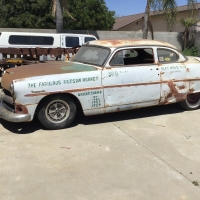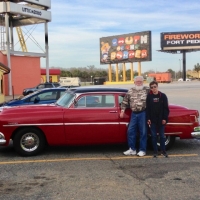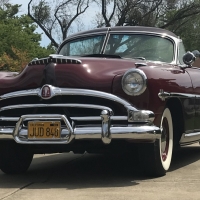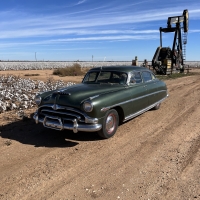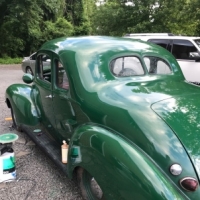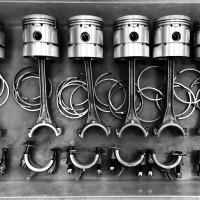Headers
We are kicking around the idea of producing a header to fit the 48-56 Hudson big sixes. We would like it to be able to be used on the pre-stepdown cars as well as the stepdowns, and be of a longer tube variety than what is currently available. A six into one design is not out of the question, and would make running a full length exhaust system easier. I would be interested in hearing opinions. At this time, we are not asking for commitments, just trying to gauge if there is enough interest to even keep talking about it.. We have seen headers that are currently available that have serious fitment issues in various areas, with questionable welding, and I have no doubt we can produce a better product. What do you think?
0
Comments
-
I thought the current headers from Clifford solved some of the fitment problems in short vs. long wheelbase stepdowns? Not sure about pre stepdowns. The ones on my '54 seem to fit pretty well.
A number of years ago someone else was making headers and they seemed to be well regarded. I don't know any details on the design however.0 -
Clifford's headers don't even fit with their own Weber intake.0
-
That is true for the 3x2 but not the 4bbl manifold, at least not that I am aware of. The 3x2 is no longer available.0
-
Bruce Silva from Northern California was doing beautiful 6 into 1's that were a work of art. They fit perfect... CNC flanges... all Tig welded... top quality pieces. I wish I had bought more than one set. The one I bought, went to Norway as part of the triple Weber setup I had.50C8DAN said:I thought the current headers from Clifford solved some of the fitment problems in short vs. long wheelbase stepdowns? Not sure about pre stepdowns. The ones on my '54 seem to fit pretty well.
A number of years ago someone else was making headers and they seemed to be well regarded. I don't know any details on the design however.0 -
Yep, that is the one I remember.0
-
I’m Bruce Silva’s son, Andrew, and I still have the jig for the headers and I know the gentleman that produced them for my dad would make some more. Only problem is it has to be a minimum of 10 and I’m sure the price has gone up since the last batch. I can get a hold of him this week and get some numbers for you guys if your interested.0
-
Andrew, I will go for a set. Count me in as one of the 10 needed! Bruce MacLellan
0 -
I will go by his shop tomorrow and talk with him and see what kind of lead time we are looking at and if the minimum order can be lowered0
-
Could some one that has them on a step-down BIG-SIX Cylinder eng with the Iron
TWIN-H-manifold include a picture fo all of us to see, I am interested in a set.
RUDY Bennett0 -
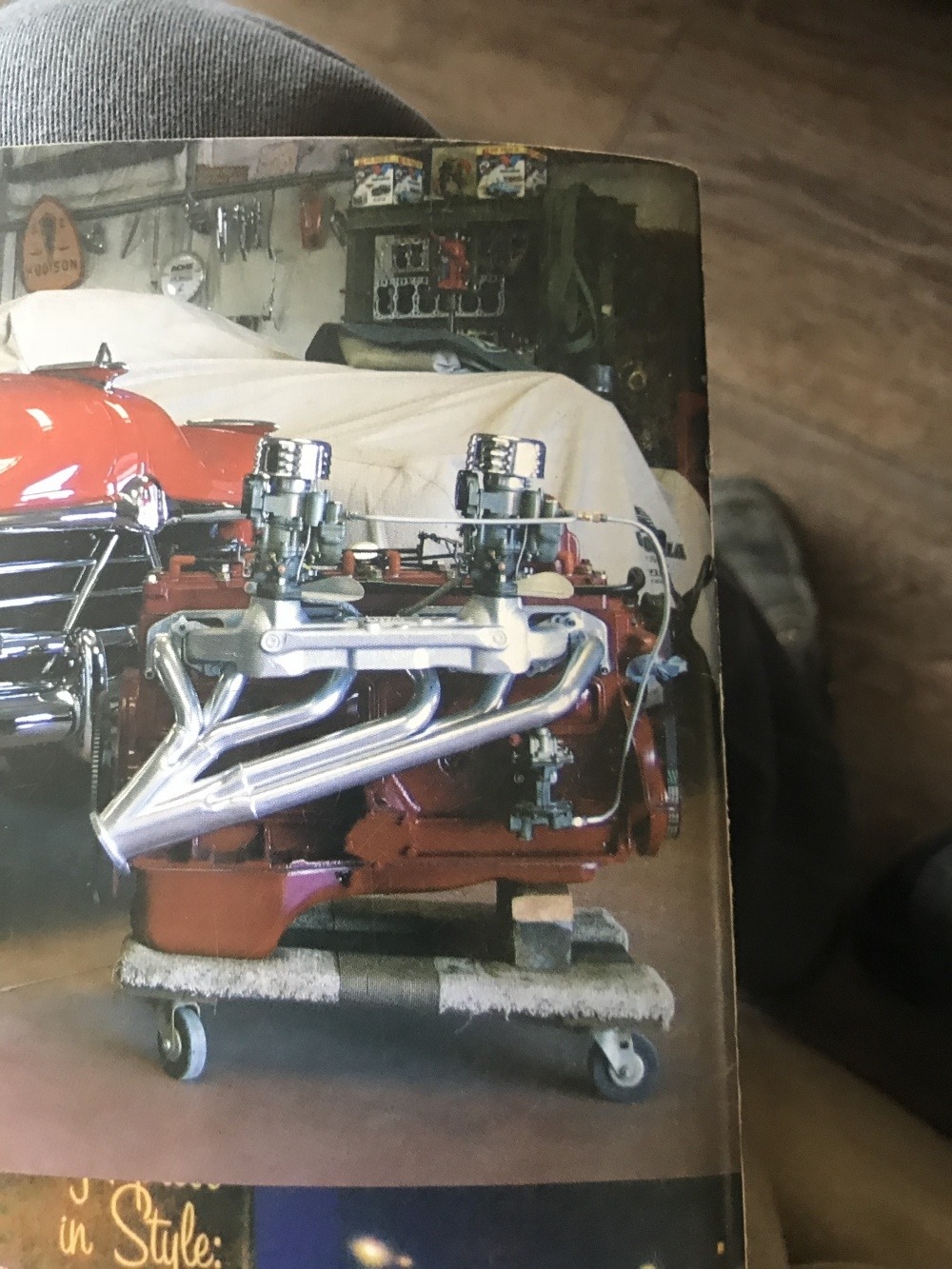
0 -
This is a set my dad sold to Al Saffran years ago, all I had on my phone so I hope the image got posted0
-
Thanks so much ANDREW Pictures are very very Good.. I have a set made by Clifford but have not installed them as the fit up to the block is very poor quality. HUDSONLY Rudy0
-
That’s a nice looking piece, I would be interested as well. My only concern is the front half runs a long tube and the rear a short tube. Would that give any performance issues, or would it matter?0
-
Ideally you would like equal length runners. Not sure how it would effect a inline? Doing equal lengths are a pain.0
-
The Silva design is still way better than a factory cast iron manifold. If you are trying to get every ounce of horsepower for drag, or land speed racing, a long, equal length primary tube would be important. I don't think any of our butt dynos are going to be sensitive enough to make that determination on a street car without all the full race modifications that go with building an engine for competition purposes.0
-
54coupe said:The Silva design is still way better than a factory cast iron manifold. If you are trying to get every ounce of horsepower for drag, or land speed racing, a long, equal length primary tube would be important. I don't think any of our butt dynos are going to be sensitive enough to make that determination on a street car without all the full race modifications that go with building an engine for competition purposes.
Agreed! If I am using the stock exhaust manifolds, I usually open the outlet up to 2 1/4" just to try and get it to breathe a little better but would definitely be interested in a header like the one pictured above.0 -
What 7x said!0
-
Ok I gotcha. I’m getting an old Clifford long tube set from a friend to replicate my dads Hornet in the 70s, but the new will look good and clean as well0
-
Left a message but didn’t hear back from him today but I have a break tomorrow afternoon from work so I plan to drive over to his shop. On my grandfathers 53 Hornet my dad took off a set of Clifford long tubes and replaced it with the 6/1 and we both didn’t notice any loss of performance but what it gained was ease of installation and no 6 cylinder pop on deceleration(my dad hated my 49 with Clifford long tubes and duals). I will keep you posted when I talk to him. And one other thing these DO NOT fit short wheelbase Stepdowns0
-
I would be very interested in your 6 into one header too. Please keep us posted!
0 -
I've spent some time looking at the Clifford headers and the Silva headers. To me the front tubes look the same. The only real difference that I see is the two collectors and the single collector. To me both look great, but I'm not a fan of chrome. Unless they are coated like the Sanderson block hugger headers that I have on my small block Chevy0
-
Are the chrome plated or stainless? You could always get them ceramic coated.0
-
The set in the photo here are ceramic coated0
-
https://www.jet-hot.com/articles/2018/6/29/5-important-reasons-you-should-ceramic-coat-your-exhaust-headers-and-turbo-parts
I have used this company for header coatings https://swaintech.com/race-coatings/race-coating-descriptions/white-lightning-exhaust-coatings/
Coatings: Are They Worth It?
As a part of our test, we wanted to quantify the benefits of a coated header versus a plain uncoated black painted header. A thermal barrier ceramic coating adds considerably to the price of any header, often doubling the price. We tested two otherwise identical Hooker 1⅞-inch headers with surprising results. Running on the dyno, we found the power numbers virtually unchanged (see Average Power table on next page). Where the ceramic coating made a remarkable difference is in the heat transferred by the header. We tested the header temperature immediately after a run, and then one minute after shutdown. The coated headers measured 258 degrees F dropping to 195 degrees F a minute after shutdown. In contrast, the uncoated header measured a scalding 870 degrees, retaining 520 degrees a minute after shutdown. We didn't need a heat gun to tell the difference in the test cell.
Our next test loaded the engine to 60 lb-ft of torque at 2,800 rpm, simulating a high-speed cruise situation. We gauged the surface temp of the header once fully stabilized. Once again, the difference was huge, with the coated header showing 288 degrees, while the uncoated header recorded 850 degrees. While the dyno run didn't show much difference in output, an engine breathing air from under the hood will definitely feel the effects of that extra 562 degrees F pumping into the engine bay. Taking account the effects of heat on engine component life and passenger comfort, the coated headers are definitely a winner.
Link to article:
Hoker Headers - Headers Dyno Test - Popular Hot Rodding Magazine Page 2
0 -
I would like the price for ceramic coated headers. They are great on my Chevy. I want the same on my 308 engine0
-
Swain is about $300 for a 6 cylinder.
https://swaintech.com/race-coatings/automotive-coatings/automotive-coatings-price-sheet/
0 -
I would be happy ordering 2 when this goes forward.
Jay0 -
Hi Andrew, My "54 has the Frank Hughes, full flow oil filter system installed and the filter sits in what was the fuel pump area and I will need a minimum of 6 inch clearance to the block for the header tubes to clear the filter system hoses, etc. Will this be a problem? Bruce
0 -
Sorry for the delay but I did speak to Dana today finally and I will have a complete quote for the headers sometime tomorrow afternoon, minimum order looks like it is still 10 units. The last invoice that they had on record was from 2006! Man does time fly.Bruce, I will have to measure for the oil filter clearance on a block I have at my parents and give you some dimensions between the header tubes and block.The set that is in the pic are ceramic coated. I have a guy that my family has used over the years and does excellent work, Amerikote here in Sacramento. The set on my grandfather’s 53 was done satin black but silver seems to be the most popular even though I did a set flat white.I will post any and all info as soon as I get it, I already pulled the header jig out of the garage.Andrew0
-
Love the idea of using a header, but for those of us in cold climates, how does one accomplish proper intake manifold heating when using a header in place of the stock exhaust manifold?
0
Categories
- 36.6K All Categories
- 85 Hudson 1916 - 1929
- 11 Upcoming Events
- 73 Essex Super 6
- 28.4K HUDSON
- 511 "How To" - Skills, mechanical and other wise
- 990 Street Rods
- 150 American Motors
- 170 The Flathead Forum
- 47 Manuals, etc,.
- 71 Hudson 8
- 40 FORUM - Instructions and Tips on using the forum
- 2.7K CLASSIFIEDS
- 592 Vehicles
- 2.1K Parts & Pieces
- 76 Literature & Memorabilia
- Hudson 1916 - 1929 Yahoo Groups Archived Photos
